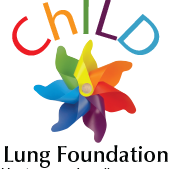The surface of the tiny air sacs of the lungs (alveoli), where oxygen goes into the bloodstream and carbon dioxide comes out, is coated in a thin watery layer that contains water and pulmonary surfactant. Pulmonary surfactant is a complex substance in the lungs which prevents collapse of the alveoli, by reducing the surface tension of water. Surfactant also plays a role in defending the lungs from bacteria and viruses. The lungs start making surfactant around 24 weeks gestation (4 months before term, which is 37-40 weeks) and adequate amounts are present starting at 35 weeks gestation. Premature infants often receive artificial surfactant to help their breathing.
There are many components in pulmonary surfactant which require the cell to make the surfactant, package it for delivery to the surface of the lung, and then move the molecules to the surface of the alveoli. There are several diagnoses that can affect the proteins themselves, or one of the processes within the cell that makes or delivers the surfactant. Surfactant proteins A, B, C, and D are specialized proteins that make up about 5% of the pulmonary surfactant. Surfactant protein B (SP-B) and C (SP-C) are mainly involved in preventing alveolar collapse while surfactant protein A (SP-A) and D (SP-D) play a role in the lung’s immune defense. ABCA3 is a protein that transports surfactant within the alveolar Type II cell, the cell type in the lung that produces pulmonary surfactant. The thyroid transcription factor (TTF1) is a protein that activates surfactant associated genes, among others. Problems with any of these can cause lung damage.
Surfactant protein deficiencies account for about 10% of all childhood interstitial lung diseases (chILD). The presentation, treatment and prognosis is variable depending on the surfactant associated protein that is deficient. Newborns with unexplained respiratory distress or failure and older children with unclear chronic respiratory insufficiency, especially in the context of a family history of lung disease, should be evaluated for surfactant protein deficiency.
As in other forms of chILD, several tests can help with the diagnosis.
- Lab work to rule out other causes of these symptoms, such as cystic fibrosis or immunodeficiency, is often performed.
- A high-resolution computed tomography (CT) scan of the lungs may show changes found with an chILD.
- A bronchoscopy with bronchoalveolar lavage (BAL) may be performed which can look for infection, inflammation and signs of aspiration into the lungs.
- In older children, pulmonary function testing is usually performed in the outpatient setting and may show decreased lung function.
- In addition, a lung biopsy may provide useful information to rule out other lung diseases with similar clinical presentations.
- The diagnosis of a surfactant protein deficiency is made through genetic testing of the child and both parents.
The prognosis of the lung disease is variable, depending on the severity of the disease. Some children require lung transplantation while others do not. As for any child, optimizing nutrition for adequate growth and the prevention of respiratory infections are important in the overall health. In addition, oxygen supplementation and assisted breathing through a ventilator may be required.
- Currently, there is no specific treatment for any of the surfactant protein deficiencies. For affected newborns, surfactant replacement therapy may improve respiratory status transiently but is ineffective in treating the underlying deficiency.In older children with milder forms of surfactant protein deficiency, corticosteroids and hydroxychloroquine may be considered. Further studies are needed to evaluate the benefits of these medications
- Lung transplantation may be considered. However, given the critically-ill and unstable state of these infants, the pre-transplant period is associated with a high risk of dying (up to 30%). The 5-year survival rate following lung transplantation has been reported to be about 50%.
- In older children with milder forms of surfactant protein deficiency, corticosteroids and hydroxychloroquine may be considered. Further studies are needed to evaluate the benefits of these medications.
More information
